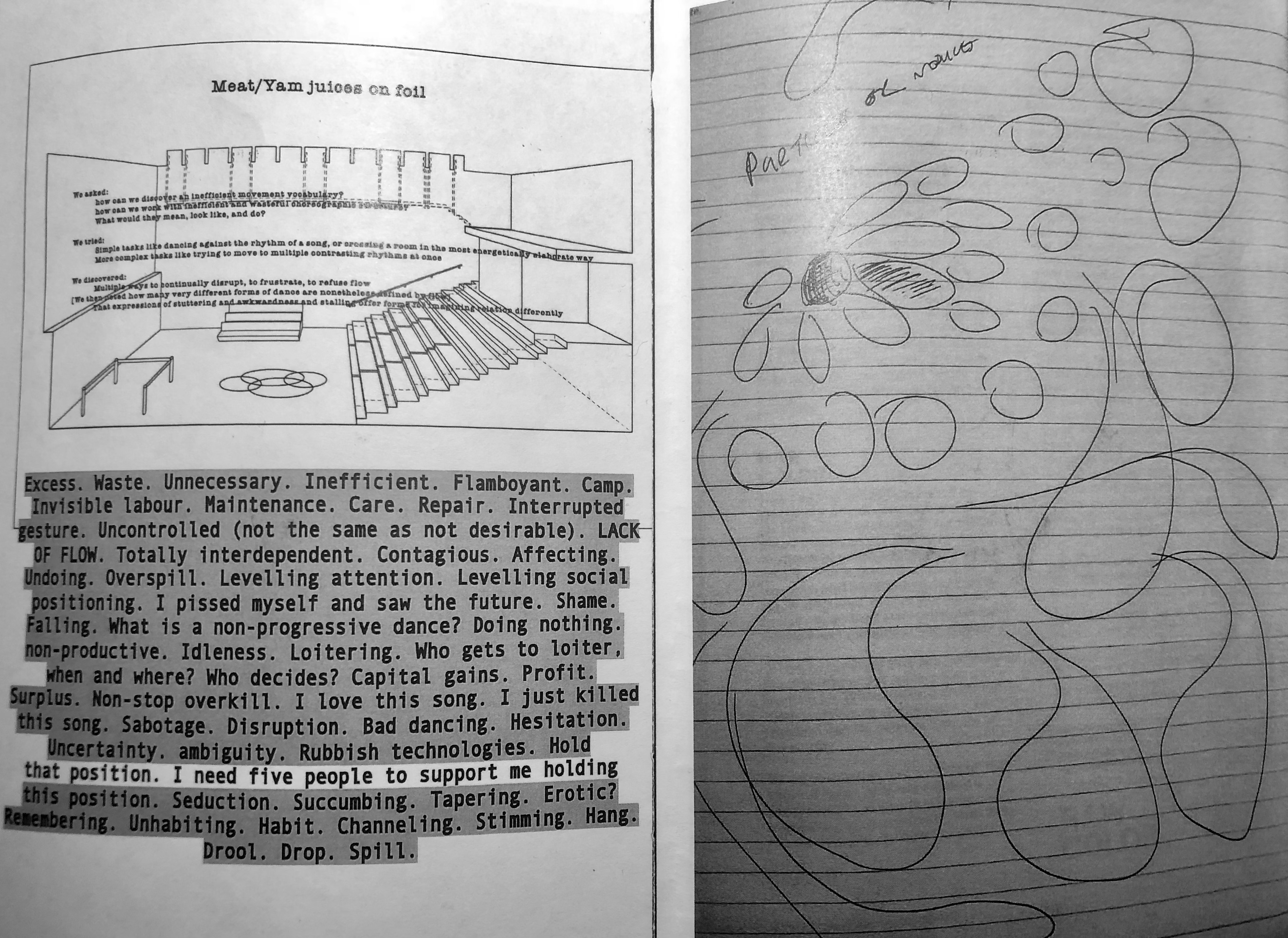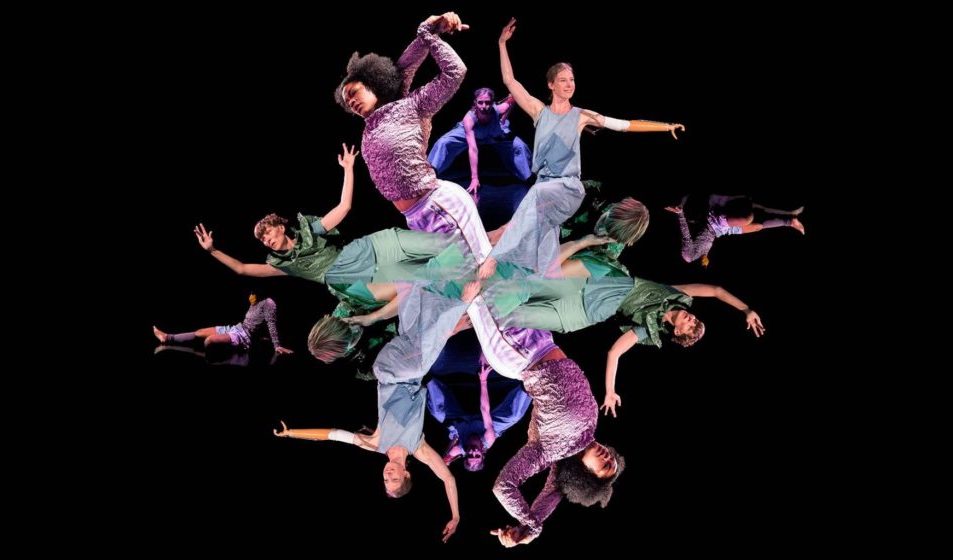Words by angel dust. Watched at Sadler’s Wells Lilian Baylis Studio.
Walking home that night, holding the thoughts and processes of a group of humans, softly layered on top of one another, unstapled, fragile and prone to wafting away their mysterious contents over time. I roll up their pages into a cylinder and start tapping them onto my thigh to a rhythm that feels soothing. In the midst of so many questions with no clear-cut answers, a metronome sets the tone to three quivering bodies. Pinged green, spotlighted blue and muted lilac, how does it feel to find yourselves in the same space?
Carareretetatakakekerers, a performance conceived by Nicola Conibere and co-created with the performers Annie Hanauer, Helka Kaski and Ming, offers us a quivering sociality, a discordant dance and an invitation to embrace the fragmented self. From the moment of entry into the Lilian Baylis Studio and throughout the first twenty minutes or so of the performance, the three dancers are pulsing different points of their bodies to a repetitive electronic beeping score composed by Duncan MacLeod. It feels like observing a group of friends tripping on a powerful drug in a club at four o’clock in the morning. Already our expectations of what a performance should be are subverted. We are presented with something that appears broken, disjointed or aimless, asking ourselves what happens when things don’t work as expected? Is the source of the problem the faulting subject or our own expectations?
Once the score reaches a pause, the performers stand still and suspense fills the room; are they going to move towards a new mode or return back to a broken one? In turns and one by one, they carry out a gymnastics-style entry into the centre of the stage but freeze into a position of their choice. First up is Annie, who saturated with confidence leaps into an arabesque. The other two initially observe before stepping in and placing their bodies adjacent to hers, in a way that helps Annie hold her body in place. Helka and Ming follow with their chosen physically demanding postures. These transient sculptural support systems messed with my head in that they both manifested softly stable assemblages, but they also made me wonder if care is something that can be performed. Performance to me implies a certain detachment from reality, a representation of lived experiences and abstractions that has affective potential and the capacity to infect people’s thinking. To genuinely care on the other hand is something… unchoreographable; not something performed for an audience. Perhaps this is a bit of a semantic puzzle between “performing care” and “performative care”, which I am offering to you reader to try and solve.
What is very clear however is that a dancer cannot perform without care. And this is where the performance becomes interesting for me, in its metaphoric lens that peeks through a more political and institutional aspect of care. By viewing the dancers as signifiers of institutions, their performative actions of care can be seen as a subtle critique of the systems which simultaneously sustain and push artists to the extreme. Care seems to be very trendy within the arts, both as a theme of artistic exploration but also as a value that is being performed by governing bodies. As artists we regularly find ourselves in contexts where care exists in theory but is not delivered in the way we need it to. So a few more questions that the performance poses to the audience is in what networks do we find ourselves and in what capacities? How do we express our needs and boundaries within these networks? How do we move away from dependence towards interdependence?
In a sudden, scrap all of the above, add rapid genre-shifting music, three bodies ecstatically keeping up with a salsa style choreography, one trips and falls before joining back in. Slowly the choreography starts to disintegrate while the music continues on existing as sonic wastage, notes and lyrics reverberate in the studio without any direct physical correspondence to them. Through this wastage, a voice starts to call out Caretakers, repeatedly at an increasing speed, so that the word can’t stand on its own feet anymore, its letters crumble and form other words. When you keep repeating and squishing the word caretakerscaretakerscarereretetatakakekerers, in my ears caretakers became terrorists, became hair lovers. The performers return to quivering and there is something more genuine in that fragile state, in not forcing the body to flow, in stating “I am not here to entertain but to falter”. So we are left with a vibrating question of what does caretaking actually mean? Who does the responsibility to care fall onto?
Caretakers takes us through a non-linear party in our best-friend’s living room after not having seen each other for two years. The performance appears to not be heading anywhere specific, but in that way it ends up, subtly and with humour, covering a lot of ground. It simultaneously performs care and interdependence while subverting performance and spectatorship in themselves. Perhaps its abstract structure might have alienated some of the audience but most crucially, it managed to remind us of the value of rest, slowness and pleasure now that a pre-pandemic metronome is setting the meter of our days again.

Carareretetatakakekerers is presented by Normal Conditions — performed and co-created by Annie Hanauer, Helka Kaski and Ming with original sound composition by Duncan MacLeod, costumes by Lucille Acevedo-Jones, lighting by Marty Langthorne, dramaturgy by Martin Hargreaves, promotional designs by Ted Young-Ing and choreographed/conceived by Nic Conibere.
